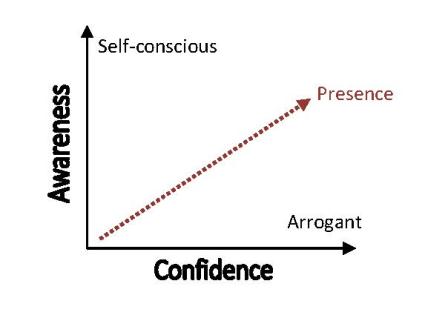This is an excerpt from Barbara’s forthcoming book, Commit to Confidence, to be published next month. Stay tuned!
Have you ever met someone at a party or networking event and noticed that they had such a magnetic personality that you found yourself drawn to them? Perhaps you thought about them the next day as you were driving to work. Now imagine that this person is you. Being able to communicate your most authentic self – your personal brand – is an essential element of confidence. Knowing who you are and what you offer the world is one half of the equation. The other half is that others see the same thing.
The term personal branding first appeared in a Fast Company article by Tom Peters, in which he wrote:
“Regardless of age, regardless of position, regardless of the business we happen to be in, all of us need to understand the importance of branding. We are CEOs of our own companies: Me Inc. To be in business today, our most important job is to be head marketer for the brand call You.”
Effective and enduring personal brands do the important job of differentiating you from the pack. A brand can help you stand out in your area of expertise, among job candidates, or among twenty pairs of flip flops. Your brand is a fusion of your personal values, your skills, your passion, and your purpose. After you have experimented with various recipes and your brand is “fully baked,” you can enjoy the benefits of a consistently vivid and identifiable trademark – much like Chanel No. 5 or Obsession.
Here is the tough love: you can only experience the benefits of a strong personal brand if you are willing to put in the work. That work includes honest reflection, self-assessment, strengths-finding, and a commitment to manifest the results in your everyday interactions with others. Having studied personal branding for several years as an executive coach, I can offer the following tips to ensure your success:
1. Operate on all cylinders. Bring your head, heart and gut with you wherever you go. They each serve an important role in how you are perceived by others. You think, feel and react more effectively when you are fully present. You let people know that you want to be right there, talking to them. Distracted listening and hesitant body language signal to others that you are not to be taken seriously.
2. Don’t be boring. Yes, small talk is challenging, but it doesn’t have to be dull. Find ways to engage others through asking questions, and knowing what’s going on in the world that day.
3. Take the temperature of the room. Just because you created 27 slides does not mean that you must get through all of them as planned. It is much more valuable to “read the room” and make a decision about the best way to proceed. It may be that you take a break for discussion after the 10th slide. Your audience will thank you for it.
4. Strike a balance. The average audience can pick up on the speaker’s internal state of mind. If you are operating on two cylinders, or you have blinders on, your listeners can sense this and they decide that you are not worth their time or attention. Effective personal brands require an alignment between your internal state and your outward expression. The schematic above shows the balancing act required to project magnetic personal presence. Successful people – whether they are hugely popular extroverts who love the stage, or dependable, respected introverts who prefer small group settings – all manage to strike a balance between awareness of others, and feeling truly at ease.
Here’s to a great year and to building the confidence you need to achieve your goals.
– Barbara
Barbara is Head Coach at SWP and author of the upcoming book Commit to Confidence: 30 Strategies to Help Women Step Up and Stand Out. She can be reached at Google + at +Barbara Roche.



